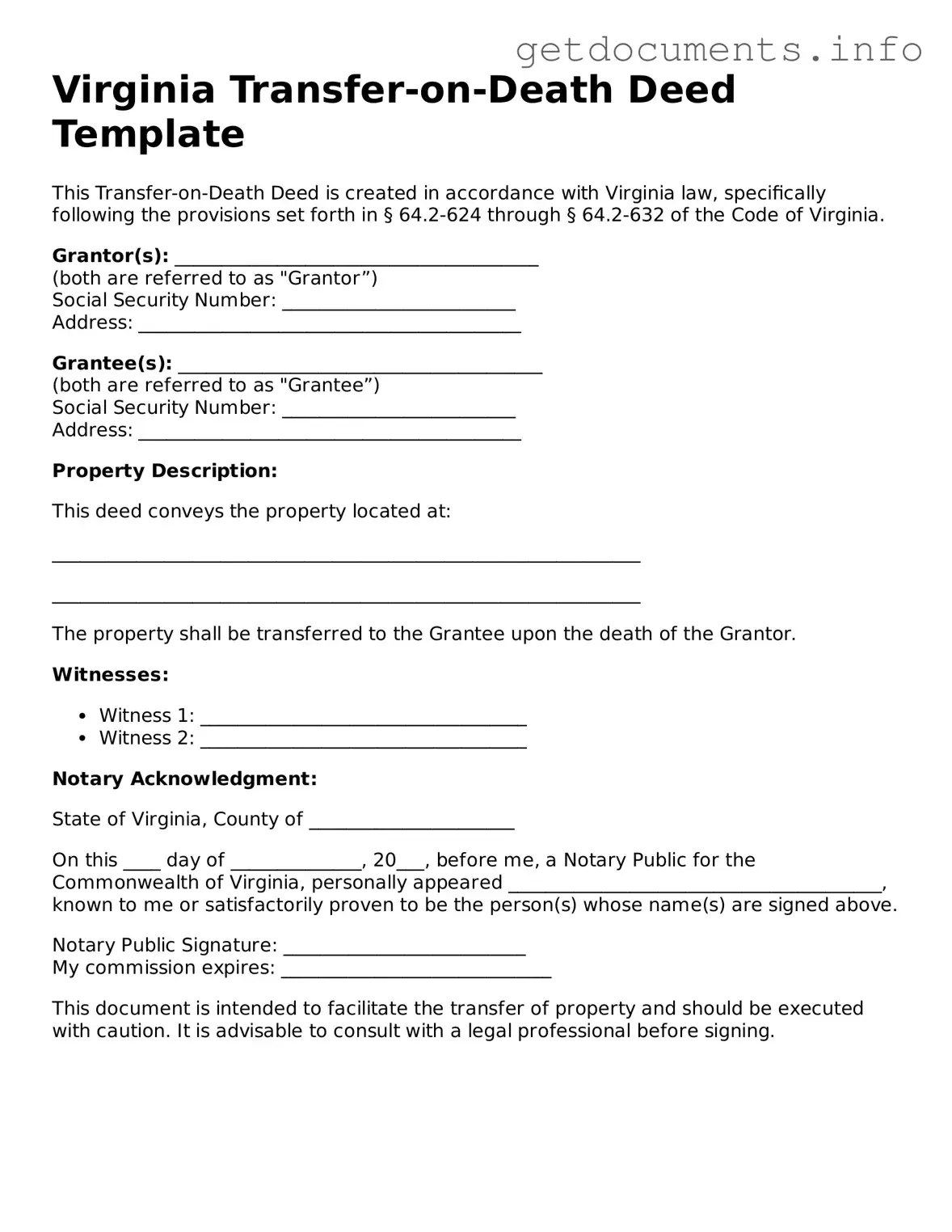The Virginia Transfer-on-Death Deed form serves as a valuable estate planning tool for property owners who wish to ensure a smooth transition of their real estate upon their passing. This legal document allows individuals to transfer ownership of their property directly to designated beneficiaries without the need for probate, simplifying the process for heirs. By executing this deed, property owners can maintain control over their assets during their lifetime while providing clarity and certainty regarding their wishes after death. The form requires specific information, including the names of the property owner and the beneficiaries, as well as a description of the property being transferred. It must be properly signed, witnessed, and recorded in the appropriate jurisdiction to be valid. Understanding the nuances of the Transfer-on-Death Deed can help individuals make informed decisions about their estate planning needs and ensure that their property is distributed according to their desires. This article will explore the key features, benefits, and considerations associated with the Virginia Transfer-on-Death Deed form, empowering readers to navigate their options effectively.
